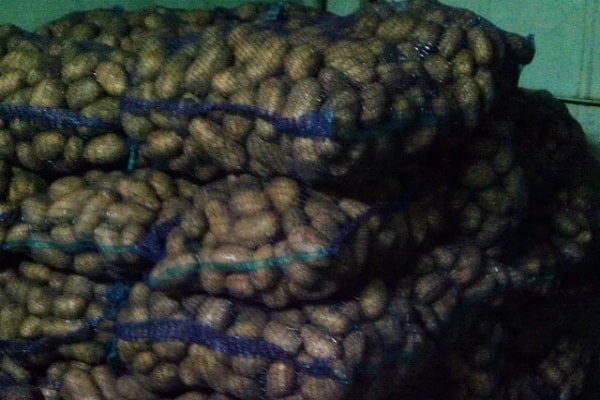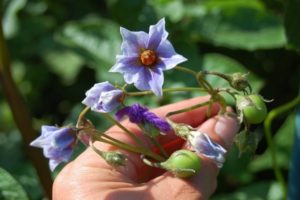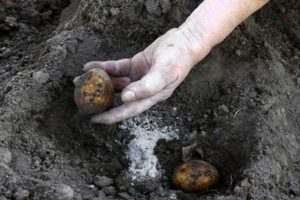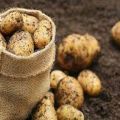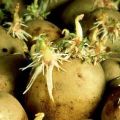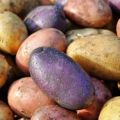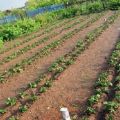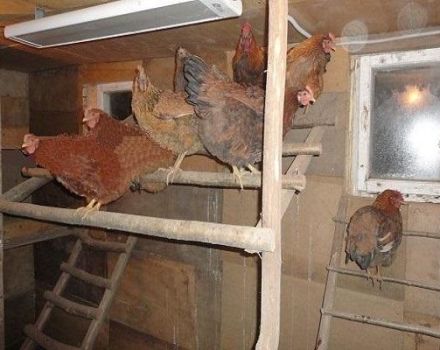Description of the Yanka potato variety, features of cultivation and care
Among all potato varieties mid-season crops are especially popular. This demand is due to the fact that tubers can be planted at a convenient time for gardeners. At the same time, the harvest takes place before the onset of autumn cold snaps. These varieties include Yankee potatoes. Despite the fact that this culture of Belarusian selection, it has won success in cultivation on the territory of Russia. What is such a popularity of the variety and how it is grown, we will tell you in detail in this article.
Description of the variety
Yankee potatoes are a high-yielding, mid-season table culture. The ripening period of tubers is 90-100 days. Under each bush, about 10 large fruits are usually formed, with a small amount of unmarketable fines. The total yield of the variety is about 630 kg per hectare.
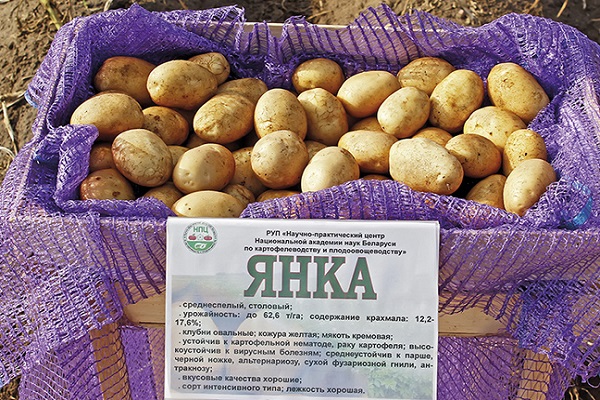
The distinctiveness of the variety from similar crops is that it has a well-developed root system. Therefore, Yankee potatoes can grow on almost all types of soil.
The description of the variety clearly indicates that the plant is erect. Its stems are moderately branched. Leaves are medium in size, dark green in color. Inflorescences are white or pale purple in color.
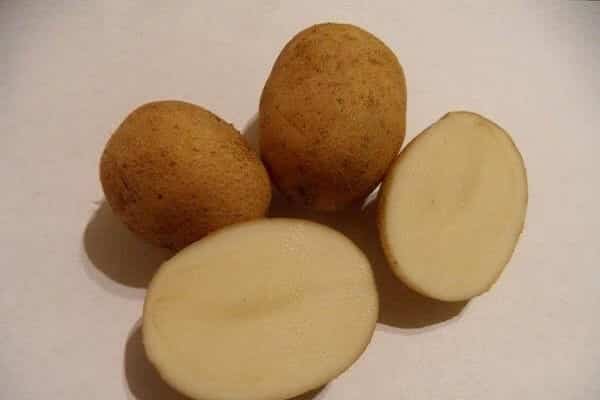
Tuber characteristics:
- shape - oval;
- the skin is smooth, deep yellow;
- eyes are small;
- pulp - beige-cream shade;
- starch content - 18%;
- weight - 80-105 g.
Yankee root vegetables are high in nutrients and vitamins. They are well used in soups, side dishes, casseroles, baked goods.

Growing
As practice has shown, the Yankee variety can grow on any soil. In addition, the plant does not require good lighting. However, the reviews of gardeners indicate that the best indicators of the yield of the variety were still observed on fertile, loose soils.
Potatoes are planted in the spring. The optimal time is considered May, when the soil temperature will be 10 degrees.

Landing scheme:
- For 10-15 days, before the expected planting, the tubers of the plant are pulled out of the cellar, get over the rot and germinate in the sun.
- While the planting material is being prepared, the field is carefully dug up, cleared of weeds and disinfected.
- As soon as the weather is warm, holes with a depth of 10 cm are formed in the ground. At the same time, it is necessary to maintain a distance in the row of 35 cm and 70 cm in the row spacing.
- Humus with wood ash is first laid and dug into the prepared recesses.
- After this manipulation, potatoes are placed in the holes.
Having sprinkled the planting material with earth, it is recommended to spill it well with an airborne method.
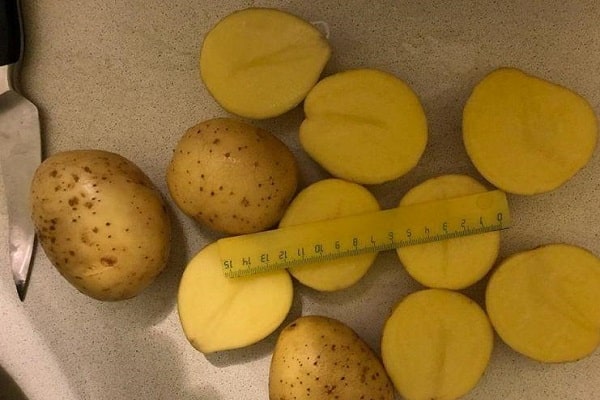
Care features
The first shoots of potatoes appear 2 weeks after planting. From this point on, the plant needs to create favorable conditions for further growth. Usually, potato farming Yankee includes the same rules that apply to all types of nightshade tuber crops. However, if they are not observed, this potato will likely have a decrease in yield.
Consider the features of care:
- Irrigation. The Yankee potato variety is undemanding to soil moisture. But still, the plant needs frequent watering during the appearance of the first shoots and at the time of flowering.
- Weeding. Weeds shade root bushes and take away nutrients from it. To reduce this negative impact, they must be removed before the development of the root system.
- Top dressing. When the soil is severely depleted of nutrients, it is recommended to fertilize it with organic matter and mineral complexes.
- Hilling. The soil is rolled onto the lower parts of the potato in 2 stages. The first hilling should be done 2 weeks after the seedlings emerge, the second before the tops close.
- Preventive work. In order to avoid the development of nightshade diseases, it is worth regularly monitoring the appearance of the plant. At the first signs of deformation of foliage or inflorescences, it is necessary to use special preparations for processing potatoes.

When growing a Yankee variety, do not forget about pests. Insect plaque can also reduce the quality and quantity of root crops.
Advantages and disadvantages
The peculiarities of the Yanka variety are that it has bypassed its fellows in the number of positive qualities.
The main advantages of the variety are:
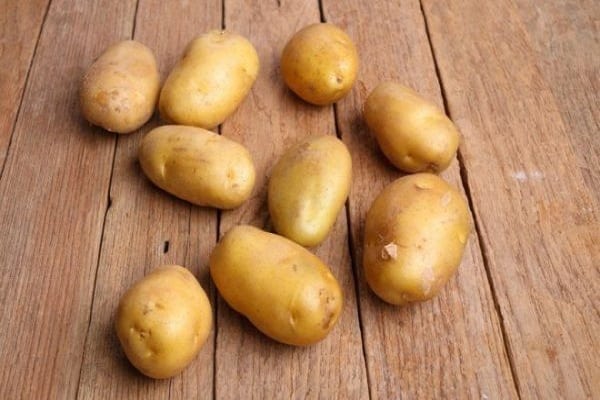
- high productivity;
- taste of fruits;
- presentation of root crops;
- resistance to changes in weather conditions;
- undemanding to soils;
- the ability to maintain their appearance when digging;
- small amount of waste;
- long storage.
Thanks to these qualities, the variety has gained great popularity among entrepreneurs who sell potatoes on the market.
But, despite such advantages, the Yankee root crop has a weak immunity to some nightshade diseases. Which is its only drawback.
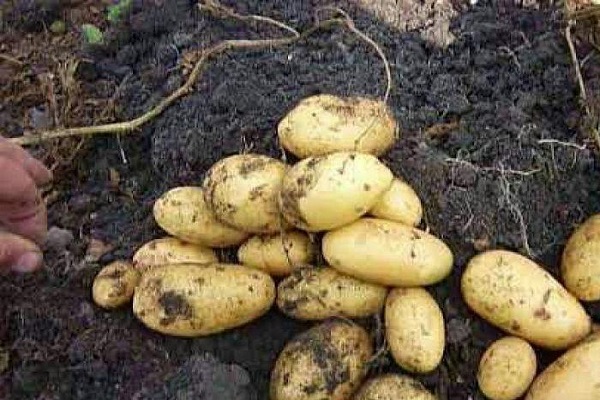
Pests and diseases
According to the State Register, the Yanka potato crop is endowed with good resistance to diseases such as:
- cancer;
- nematode;
- striped mosaic.
However, as the characteristic of the variety says, the plant is often affected by such diseases:
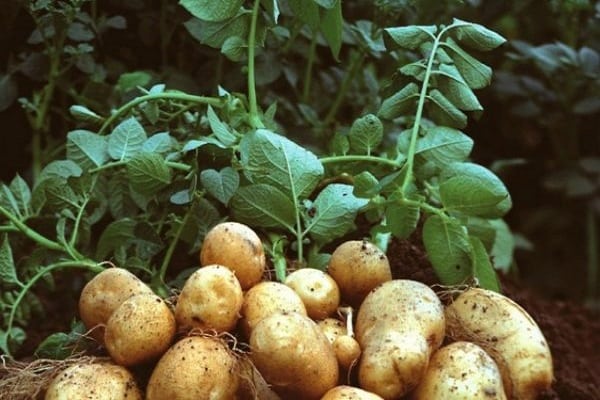
- scab;
- anthracnose;
- late blight;
- alternaria.
Each disease can lead to irreparable consequences, up to the complete destruction of the crop. To prevent their development, gardeners advise the soil before planting, and disinfect the tubers with special preparations.
According to the originators, Yanka potatoes have good resistance to insect pests. Therefore, to combat them, you can eliminate chemicals and use folk remedies.
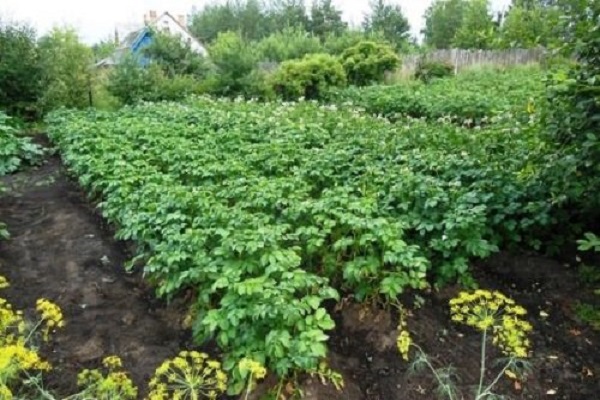
Harvesting and storage
The duration of storage of the Yanka variety is influenced by the harvest time and the rules for its implementation. If tubers are removed in an unripe stage, their underdeveloped skin will undergo mechanical deformation. Overripe fruits lose their presentation and taste. Therefore, the end of August, the beginning of September is considered the optimal time for digging a variety.
Harvesting is done using a shovel or pitchfork. Having dug up all the tubers, they are given time to dry in the sun. Then, having sorted out the potatoes, they are transported for further storage.
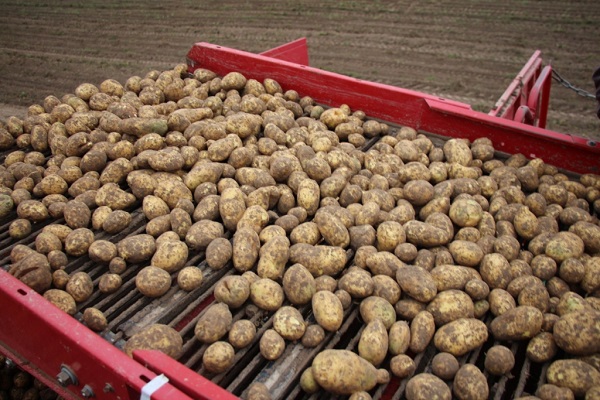
Potatoes are stored in a subfield or cellar.The ideal basement temperature is + 2–3 degrees. But at the same time, the air humidity should not be less than 80%.
As practice has shown, the Yanka variety is ideal for beginner vegetable growers. Without special skills in agrotechnical work and care, every gardener will be able to get the desired yield result. It should be noted that, subject to the storage rules, potatoes do not lose their marketable and taste quality until the next season.
